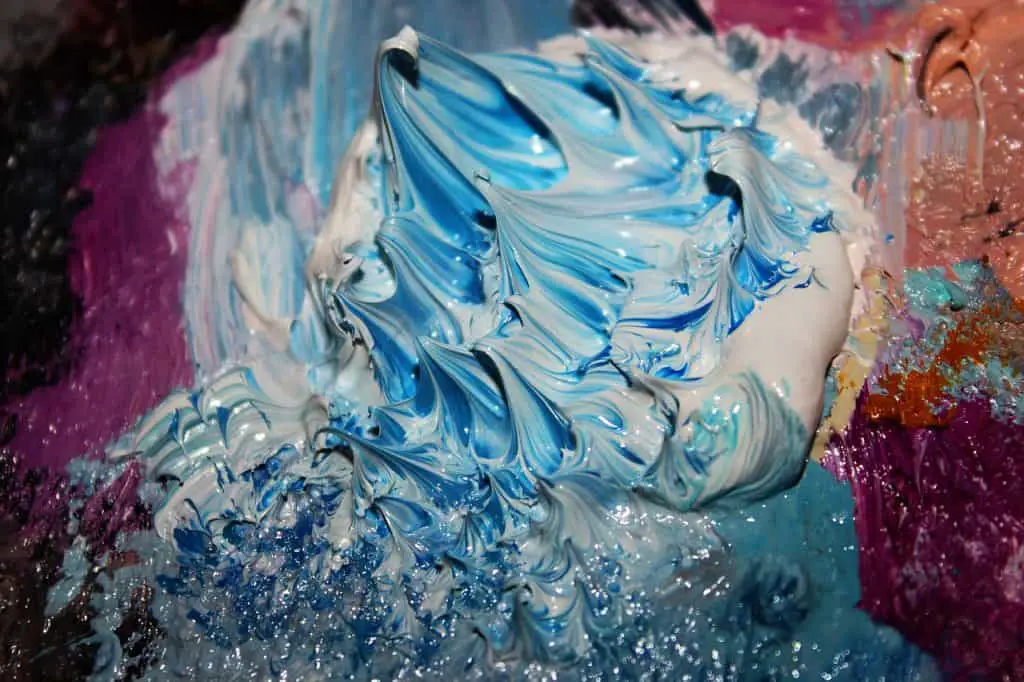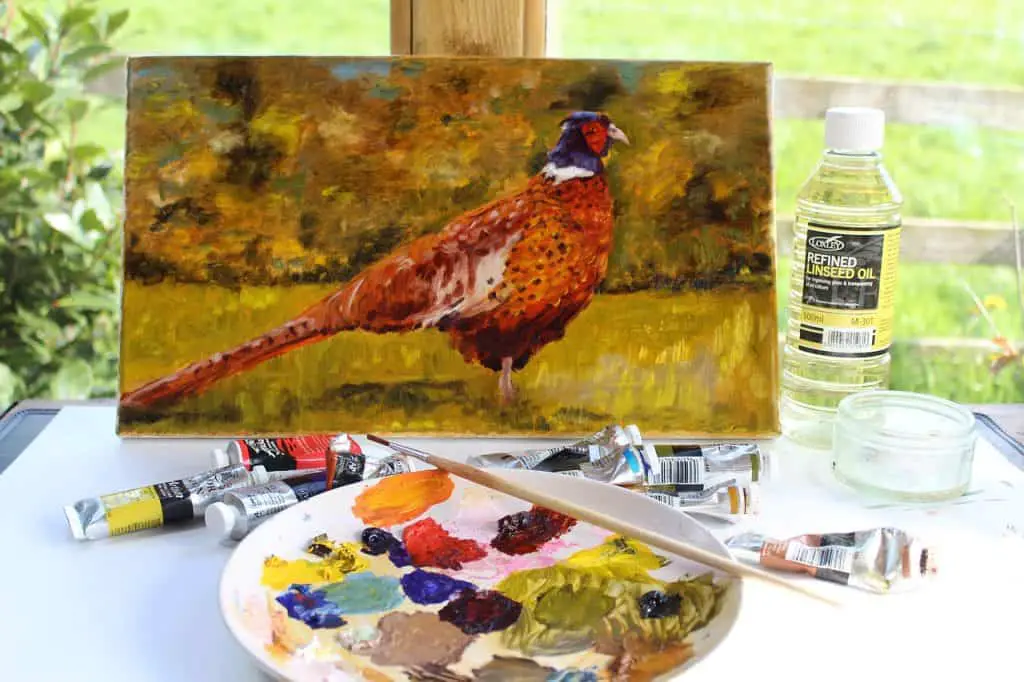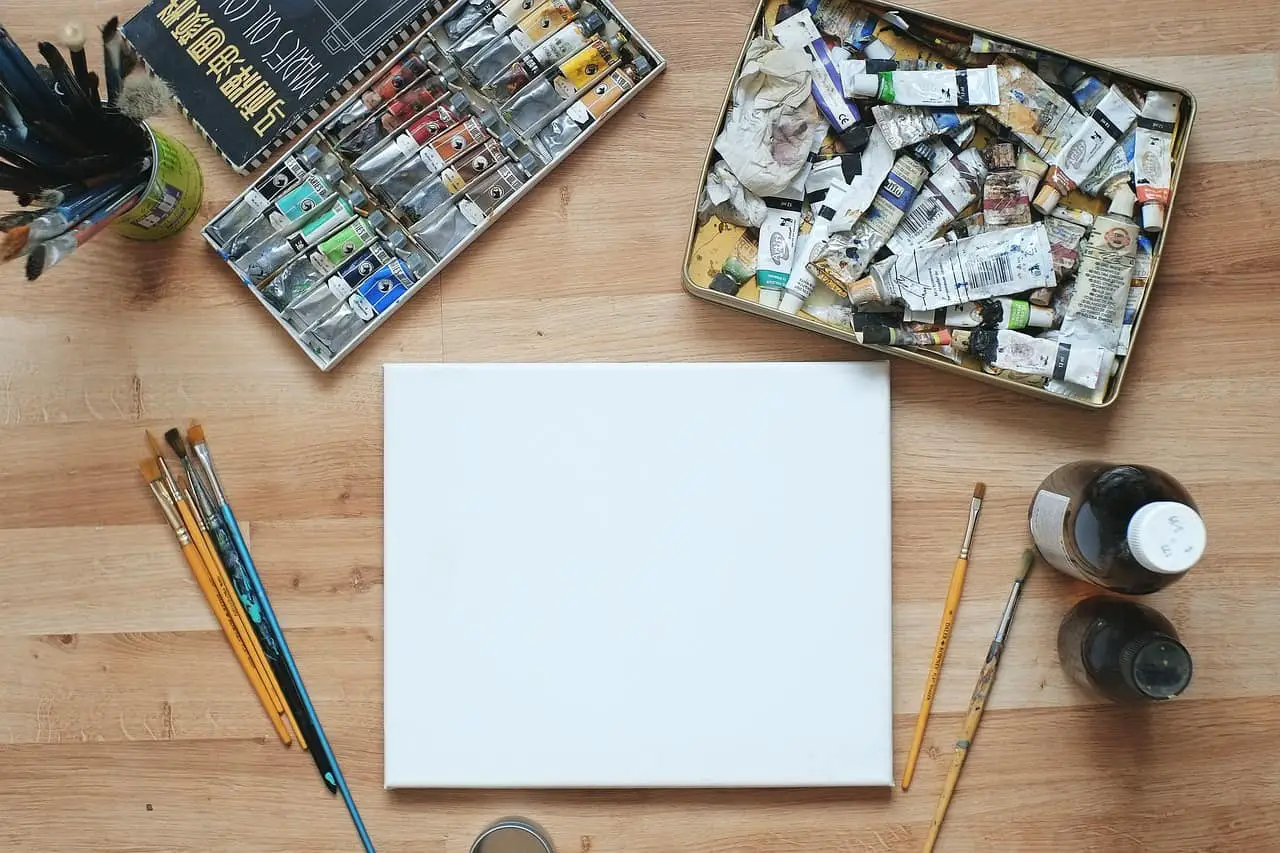If you’re like me, acrylics are your go to for painting. But what about using oil paints for a change of texture, style, or even mix and matching with acrylics?
So what’s the difference between acrylic paint and oil paint? The main answer is, acrylic paints have a much faster drying time than oil paints. There are many key differences such as texture, working time and so on, so lets go over them below.
Pros & Cons of Acrylic and Oil Paint
Smooth vs. Bumpy:
The surface of acrylic paint is rougher and porous by comparison. Oil paint has a smoother surface texture and the medium itself is more transparent than acrylic resin. Usually, colors in oil paints are clearer and more ‘luminous.’ This is one of the reasons why acrylic paint looks ‘softer’ and more muted in its color effects than oils.

Also, it is one of the main reasons why oil paints adhere better to acrylics paints, which have more ‘tooth’, than the other way around. As I discussed in one of my articles, if you must, paint oils over acrylics, but not vice versa.
If you’re looking for a quick paint guide, my top recommendation for an Acrylic Paint Set is this one. For Oil Paints, I recommend this set, its colors are just beautiful!
Do You Paint Fast or Slow?
Acrylic Pros: Paint on Any Surface
One of the coolest parts about acrylics is that you can paint them on any surface, anywhere. We’ve made various guides on all the different things you can paint with acrylic like:
Acrylic Cons: They Dry Quicker Than Oil Paints
So you put down your paintbrush, to maybe attend to your kids, grab a snack or whatever the case was, and you come back to find the paint has already started to dry!
The solution?
- Squeeze out more paint
- Add a retarder, water, and/or paint thinner
- Keep mixing until your paint is moist again!
Oil Pros: More time to work
Oil paints stay wet a lot longer than acrylics (which is both their greatest strength and weakness). This gives you more time to spending painting and perfecting your art, while you need to act quickly with acrylics.
Oil Cons: Preparation is Key
Due to the corrosive nature of the oil in the paint, you’ll need to prep whatever you’re painting carefully. However, you could buy a pre-primed canvas and get going straight away.

Oil Pros: Smooth Blending
Oil paints blend seamlessly together, achieving your desired look and feel effortlessly.
This is especially true for portrait painting, where you can get the shading just right.
Oil Cons: Can Take a While to Dry
Remember how we mentioned oil painting allows you to spend more time painting? That’s the same reason they can be a pain — long cure times. The longer it takes to dry, the longer you have to wait to hang up your project.
Texture:
Oil paints look about the same when they are dry and when they are wet; the shade, colors, and texture remain unchanged. Over time on the other hand, oils paints turn more brown/yellow and become more transparent.
This is the main reason why the oil painters in the early Renaissance era painted their lights thinly, over a smooth white gesso, and their darks, especially the cool ones, very thick. This is due to the paint warming in hues thus becoming more transparent.
Acrylics on the other hand initially dry darker, due to the water in the paint, which is reflective, evaporating. Acrylic paint also shrinks and flattens out a little bit because of the water loss, so some of the texture and brushing effects can be lost in the future. However, once dry, they will not change with age.

Heavy vs. Light:
You might not think so, but oil paints are actually heavier than acrylics. The same amount of paint will weigh more, but this can vary with the different colors. Acrylic paints on the other hand tend to be light and soft.
Different types of paintbrushes, their fibers and degrees of stiffness, will all create different effects with oil paints. Acrylic paints are not easily handled with a stiff bristle brush because the paint is so light, so the brush will tend to plow the paint instead of deposit it in a controlled fashion.
You can check out one of my articles for tips on choosing the right acrylic paintbrush. The inexpensive, soft synthetic sable brushes are more suitable for most applications with acrylics. I personally love synthetic nylon to work with =)
Water vs. Solvent:
One of the main reasons a lot of painters choose acrylics over oils, is because they are very easy to clean up with soap and water. Another reason is that some people have allergic reactions to solvents. But, because acrylic paint dries fast, it can be much less messy to work with.
Oil paintbrushes require just a little bit more work. Soap and/or vegetable oil is always the best and safest option for cleaning hands and brushes.
Old vs. New:
Oil paints have been around for hundreds of years, and when used appropriately the paintings created with them will endure for centuries. A beautiful example, The Sistine Chapel.
Acrylic paint has been around since the middle of the 20th century, and continue to improve in their quality and working characteristics. Now more than ever, artists are working more and more with acrylics, since they offer a more diverse option for colors, blending and pigment that looks like oil paints.
New studies and accelerated aging tests confirm that acrylics will likely outlast oils in the long run for being associated with ‘permanent’ painting.

Final Thoughts
I enjoy working with acrylics, and I do often use oils as well. You have to find the option that suits your painting style, lifestyle and feeling the best. I paint very fast so I love that my painting will be dry in no time.
I hope you found the answers you were looking for, and don’t forget to check out all my top recommended products for all your acrylic painting needs.
Happy painting!

